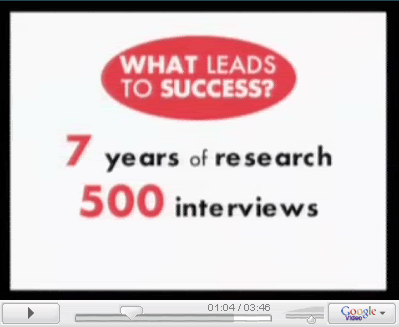My friend and mentor Richard Bandler (co-developer of NLP) had once said that he’d identified three main obstacles to mastery of any skill:
- over-reliance on focal vision
- internal dialogue
- a feeling of hesitation
This seems to be particularly true when it comes to learning to build rapport or valued consulting techniques, which relies so heavily on your ability to perceive a much wider view of things and act instinctively. By finding ways to overcome or eliminate these obstacles, you can start to really increase your abilities. Now with me, I like to look for the quickest and most effective ways to get results fast, so this week we’re going to start by looking at peripheral vision.
Training killer whales
I met a killer whale trainer a couple of years ago and she was telling me about her work. One of the things she said was that you have to be very careful when working with these creatures not to reinforce the wrong things. See, they spend most days watching and listening, with no internal dialogue, and they notice everything. They notice patterns that that the killer-whale trainers don’t, because they pay more attention, so if they detect a reinforcement pattern that the trainer hasn’t, they’ll use it to their own advantage. How do the killer whales notice so much? Peripheral vision.
Conscious unfocus
Your focal vision is what you are using to read these words. It is a small, central element of your visual field, and is particularly useful for distinguishing fine detail. Most people tend to have a high degree of reliance on their focal vision, and you can think of it as being connected to the conscious mind. Peripheral vision, on the other hand, opens up to either side of you, both above and below. Among other things, peripheral vision is good for detecting movement, and you can think of it as being connected to your unconscious.
1) Focus on the number 1 at the beginning of this sentence. As you continue to look at the number, relax your gaze, and allow yourself to become aware of the edges of the page, before you allow your awareness to continue further out to each side. See how much you can perceive on either side.
This is you peripheral vision. When you use peripheral vision while in a one to one situation, you will get more information about the person, information that you may not have been able to access in the past, such as breathing rate, gestures, blink rate and all the other things that can be useful (eg. if you want to match or mirror them to build rapport.) It also allows your unconscious to get in on the act, and for you to start to get more intuitions about the other person and what’s going on for them.
2) Sit in a comfortable relaxed position, looking forward. Imagine you have an extra pair of eyes at the level of your belly button. Become aware of the feeling of the skin at your belly, and imagine you are looking out through those eyes.
For most people, this will open up their peripheral vision, but for some people it won’t. If not, try the following tip from Photoreading,by Paul Scheele…
3) Sit in a comfortable relaxed position, looking forward. Imagine that there is a tangerine, floating a few inches above and behind your head.
Again, peripheral vision should open up, allowing you to perceive the world with a wider more relaxed gaze. Practice going into peripheral vision until you can do it at will. For most people, this is a relaxed and comfortable state to be in anyway!
4) In a low-risk situation, go into peripheral vision while in conversation with someone else. Notice what you become aware of that you weren’t before.
As you become more comfortable going into peripheral vision in various situations, you will start to amaze yourself by what you are noticing that you didn’t previously. You can do exercises which will help you to enhance your peripheral abilities even further.
More advanced
If you work with groups of people, peripheral vision allows you to notice what’s going on for all the people you are not looking directly at. This means that you can be looking at one person but noticing the signals, gestures, expressions being made by the people who think you can’t see them. Do you think this could be useful in meetings?
Next week in Mastery of any skill (Part II) we’ll be talking about how to shut off your internal dialogue…then we’ll stop talking about it! Until then, enjoy finding opportunities to practice going further with your abilities.
Thanks for spending 3 minutes with me...
The best is yet to be!
On Your Team
Jeffrey Stanton
Your Trusted Advisor For Life
PS. One of the fastest ways to build a successful referral based business is by training. Now, with me, I like to invest significant time immersing myself in training, while some people prefer to take it in bite-size chunks. Whatever your preference is, now is the best time to contact me.
You read Jeffrey's Journal every week because you, like me want the best for yourself. And you like me, want to build a strong referral based business.
If you have found this tip useful, please share it with any friends, family, colleagues and associates who you think will be interested. Feel free to print it (with credit and subscription information) and continue to enjoy the tips. I am always grateful for any comments, criticisms or other feedback that you may have. Please send them to feedback@jeffreysjournal.com


































No comments:
Post a Comment